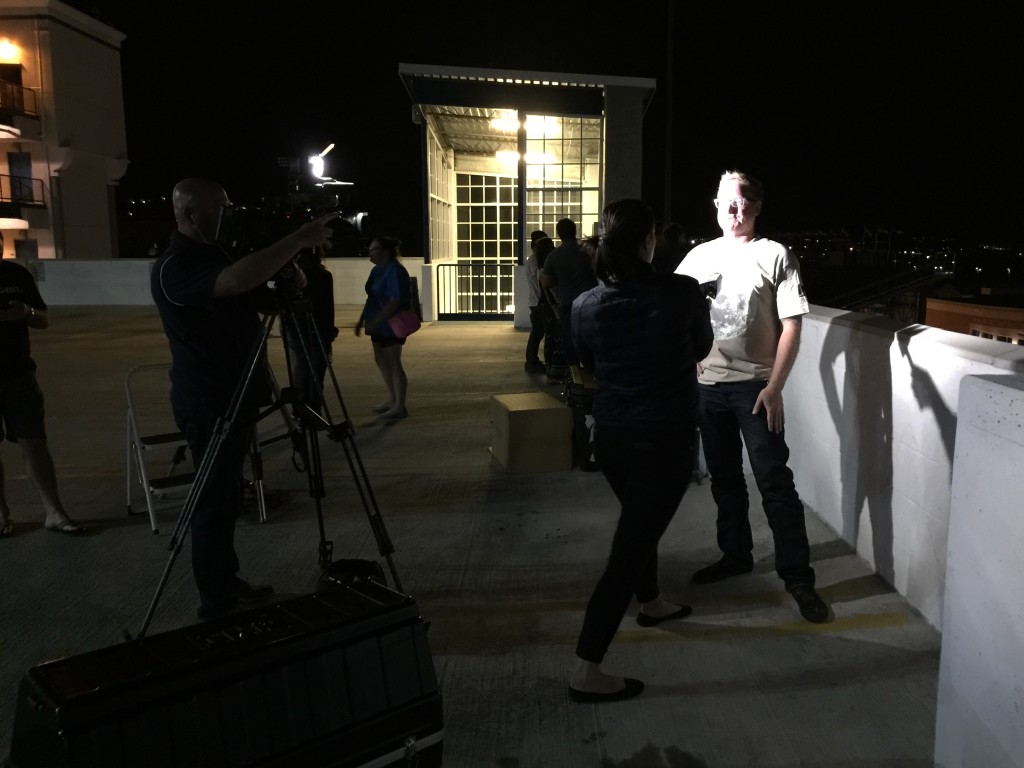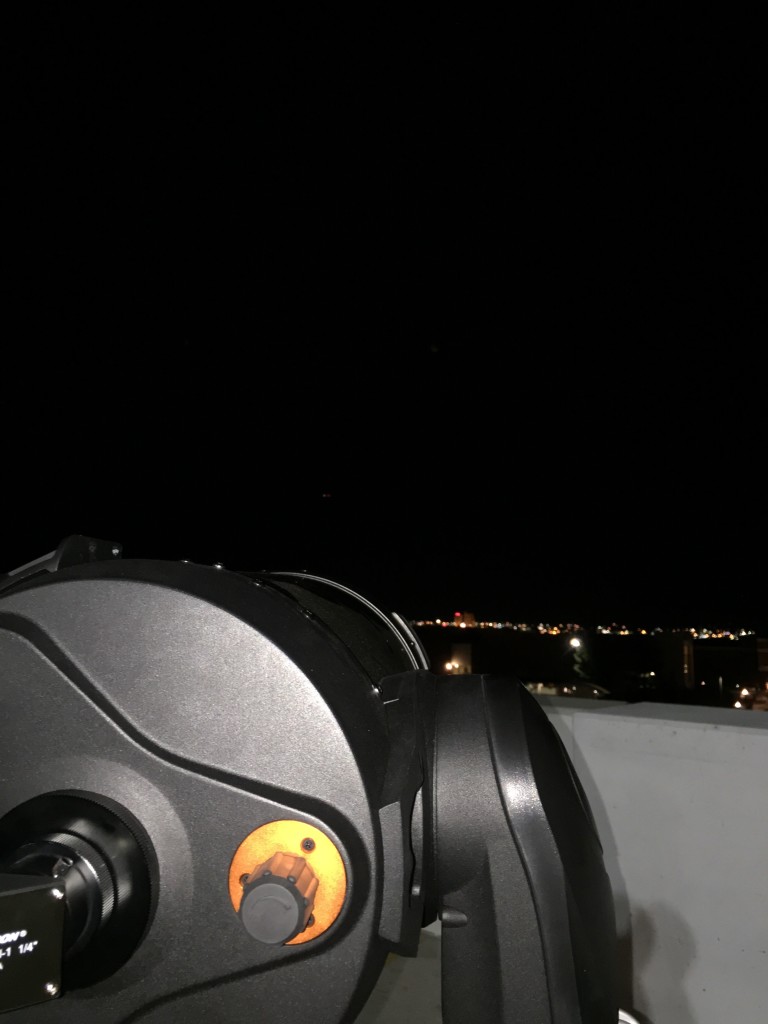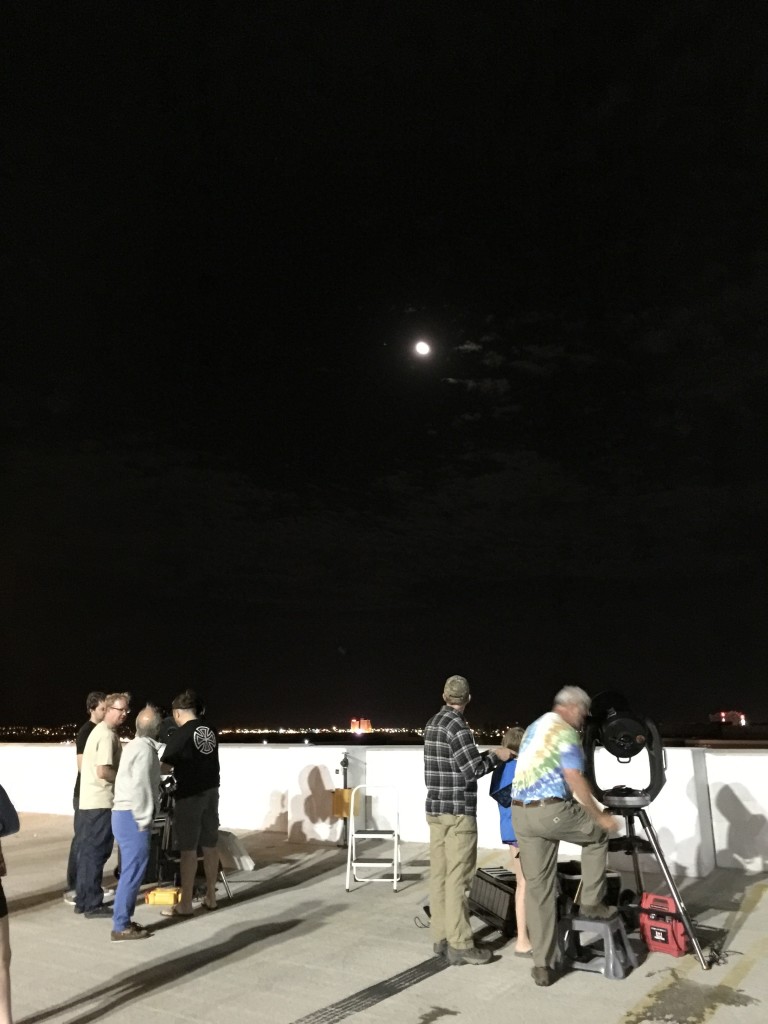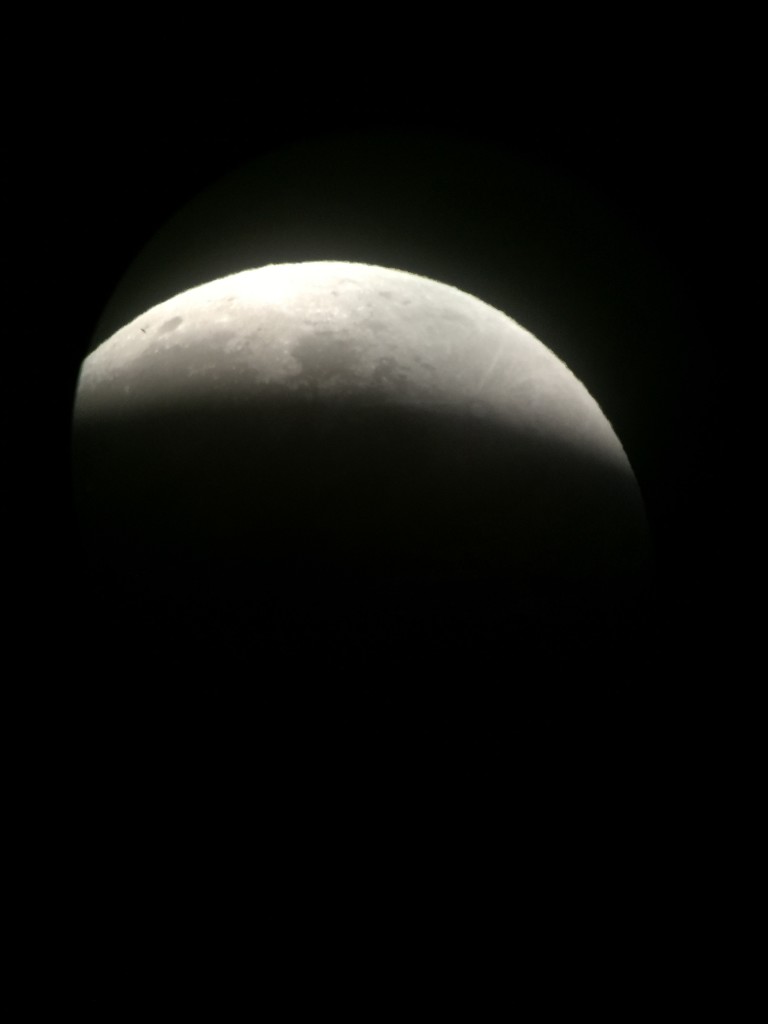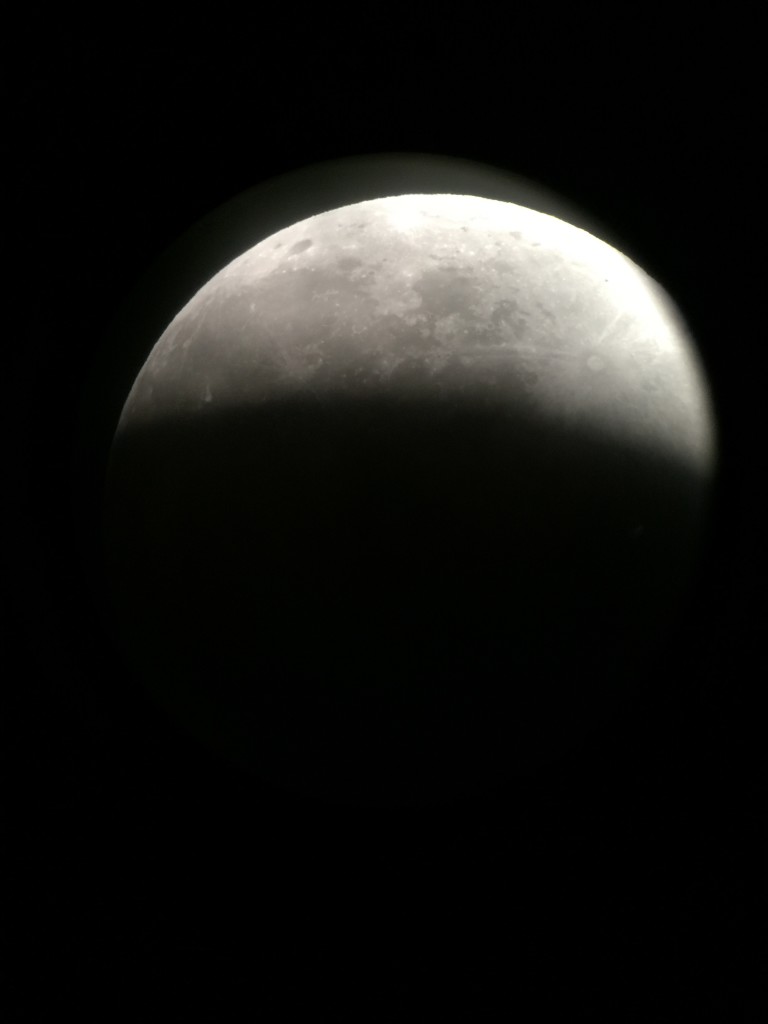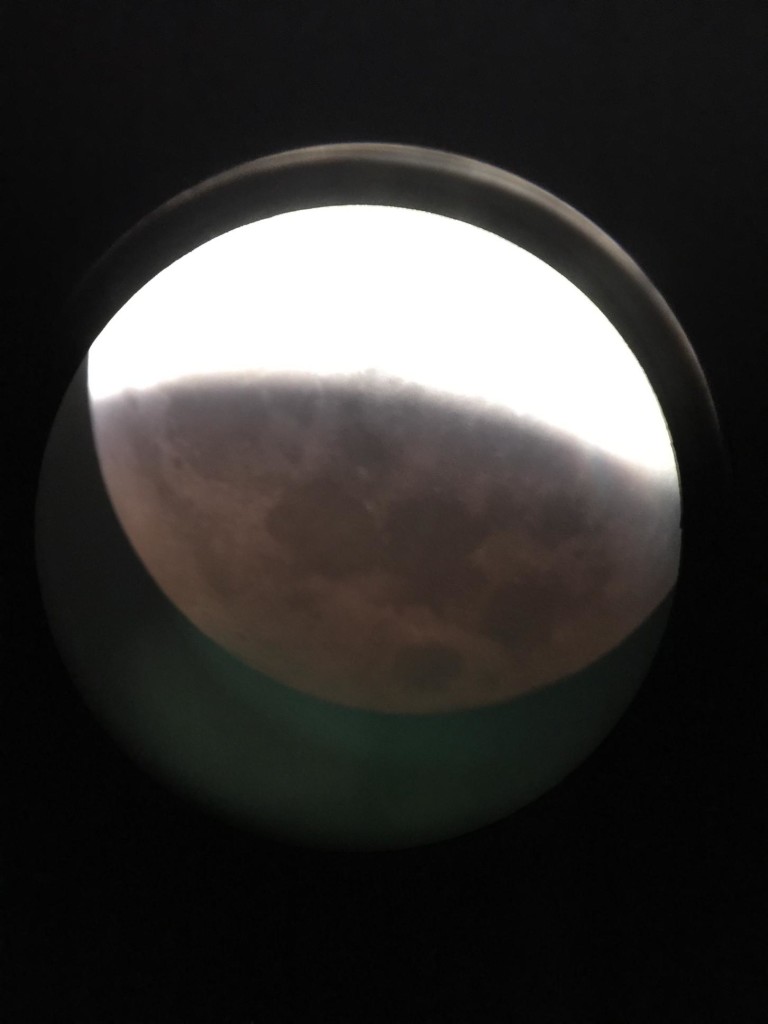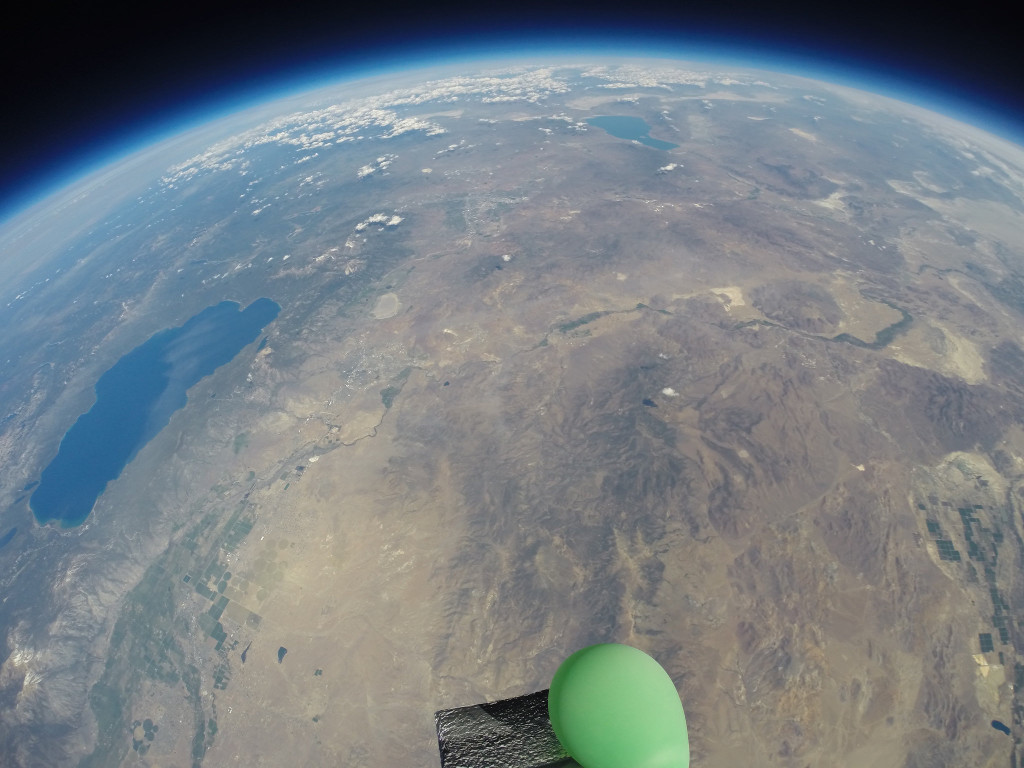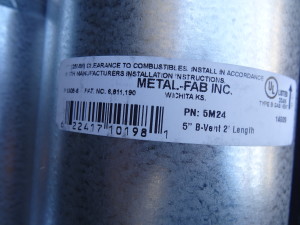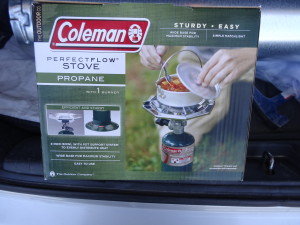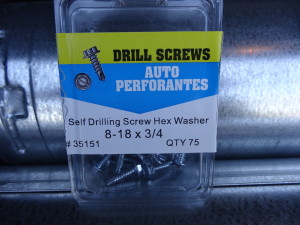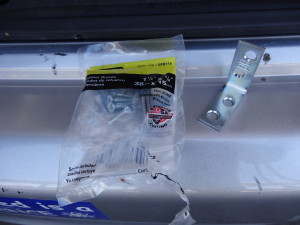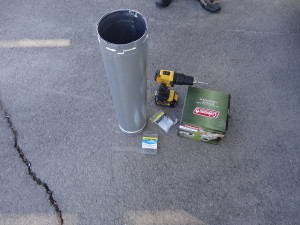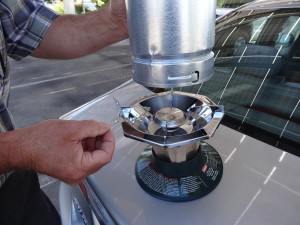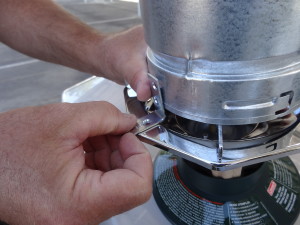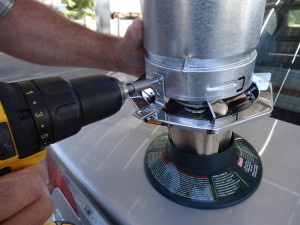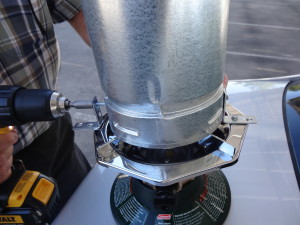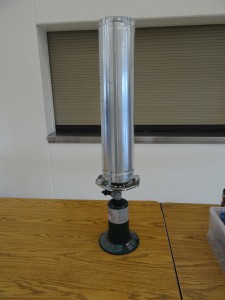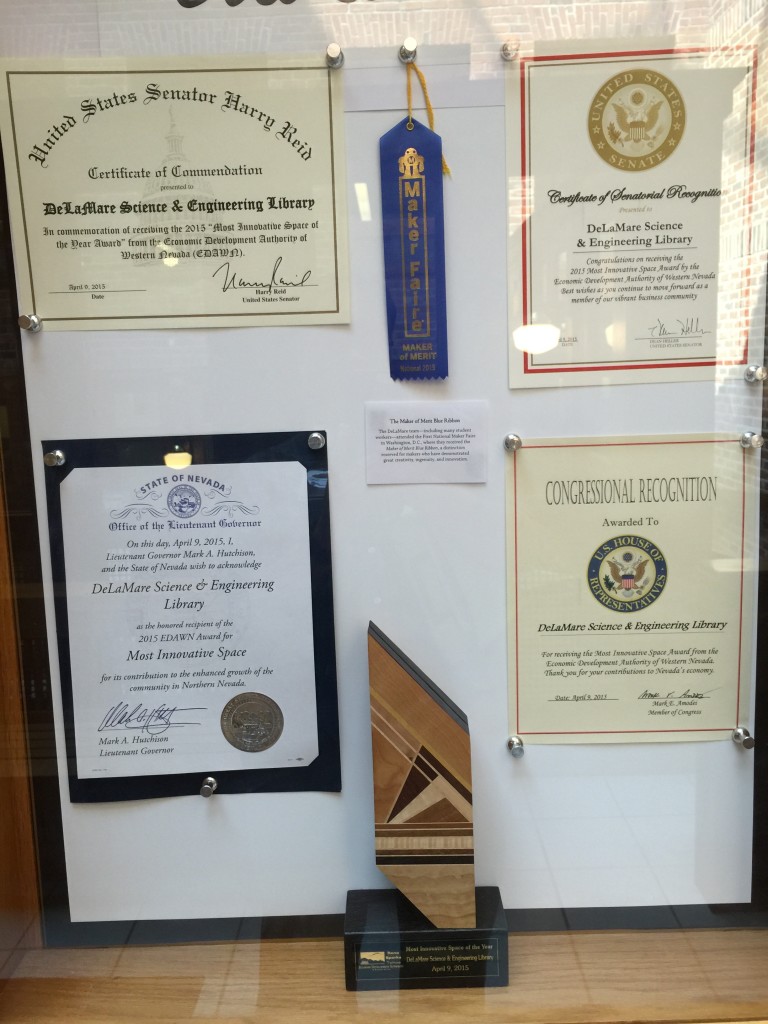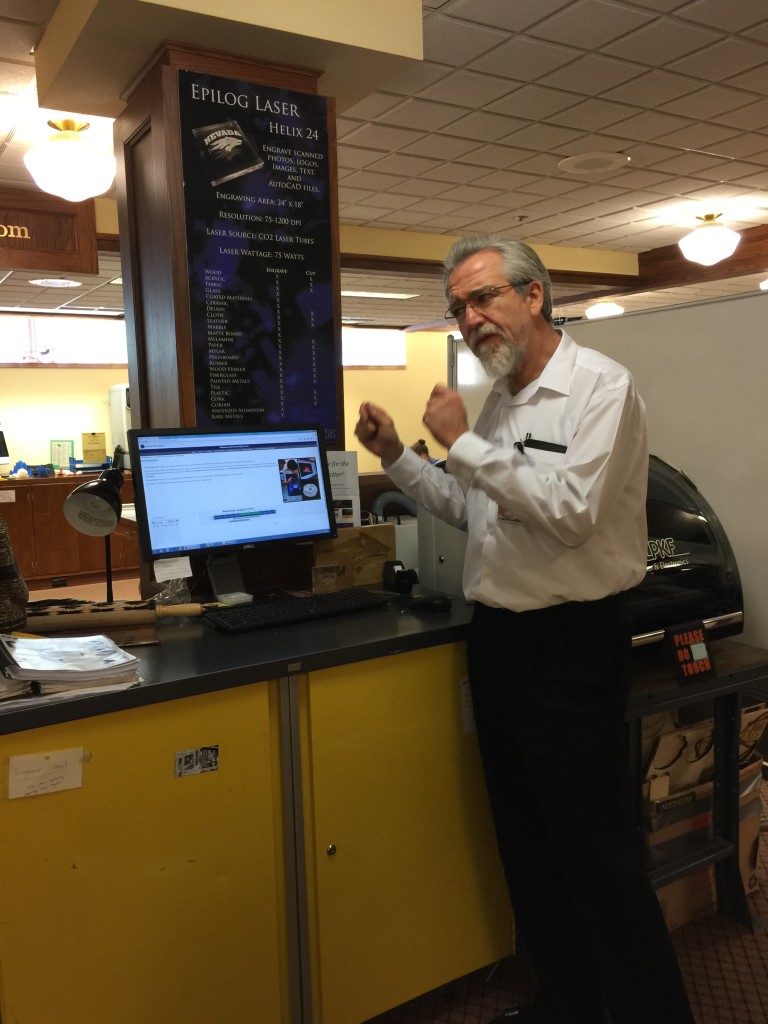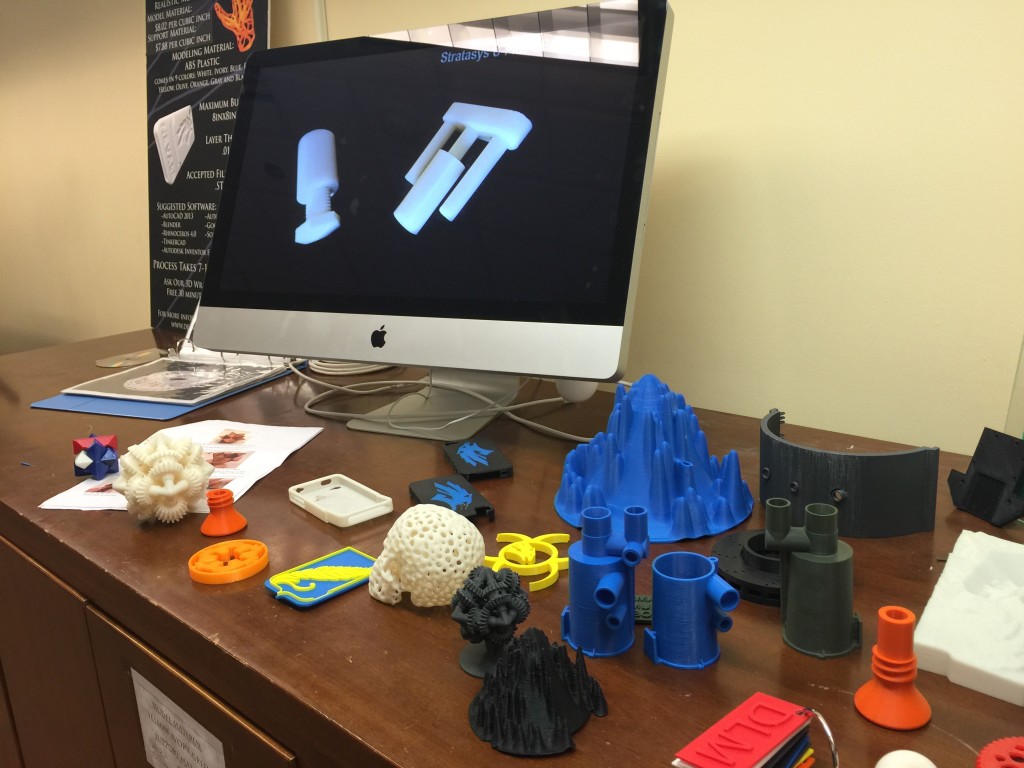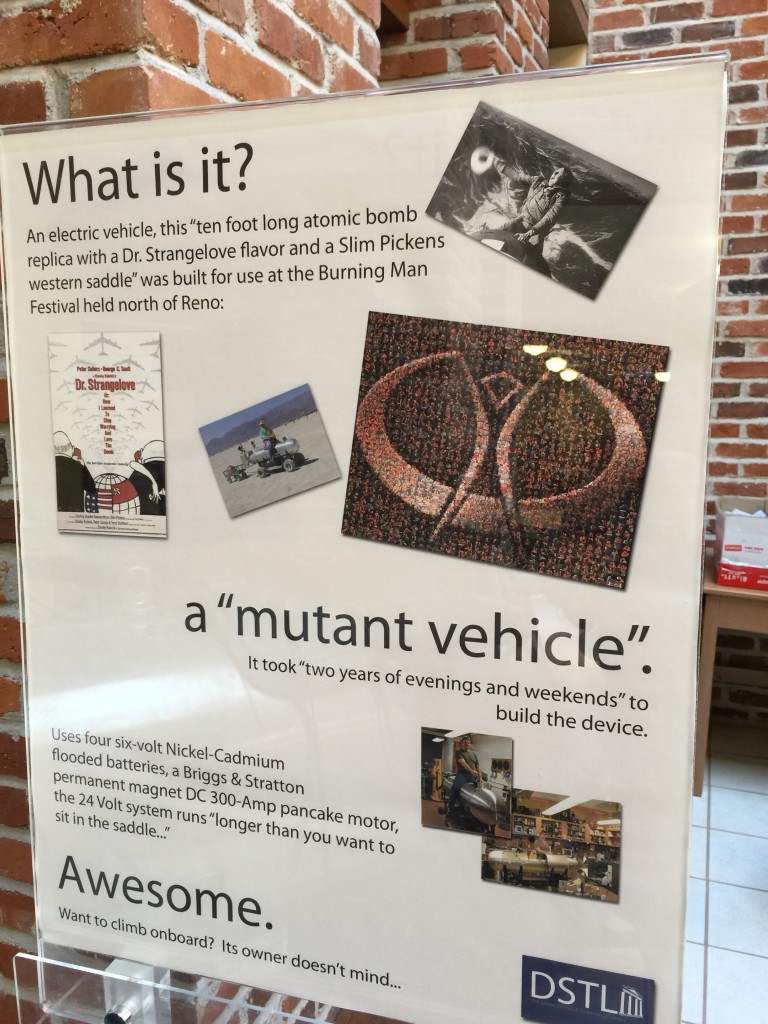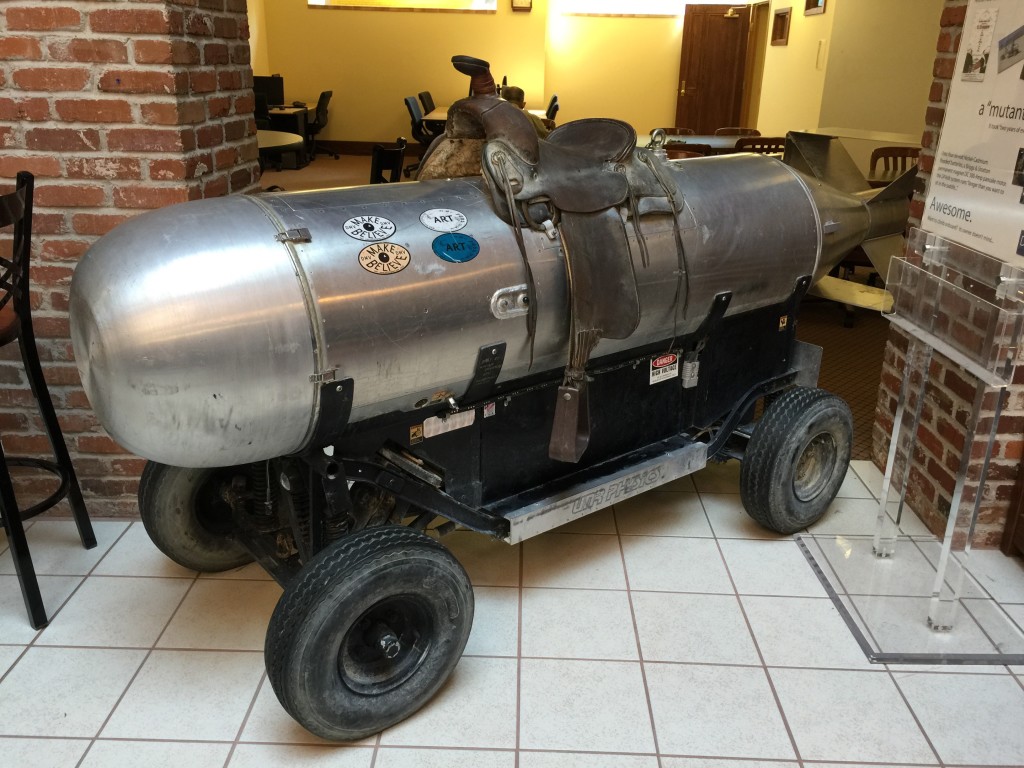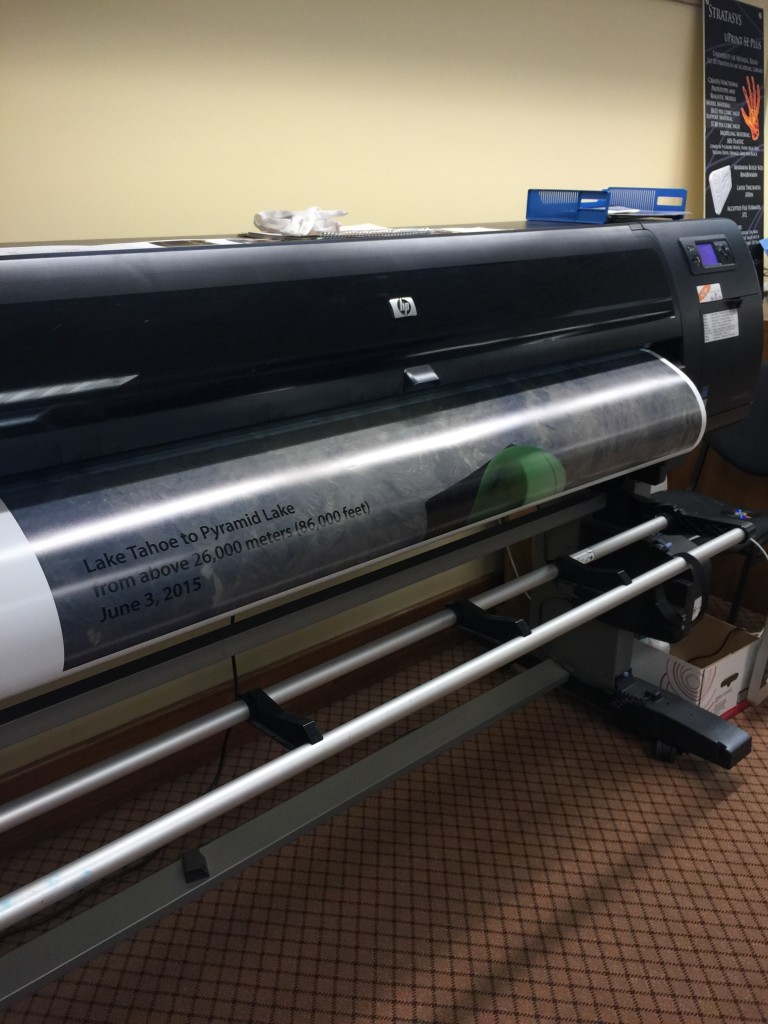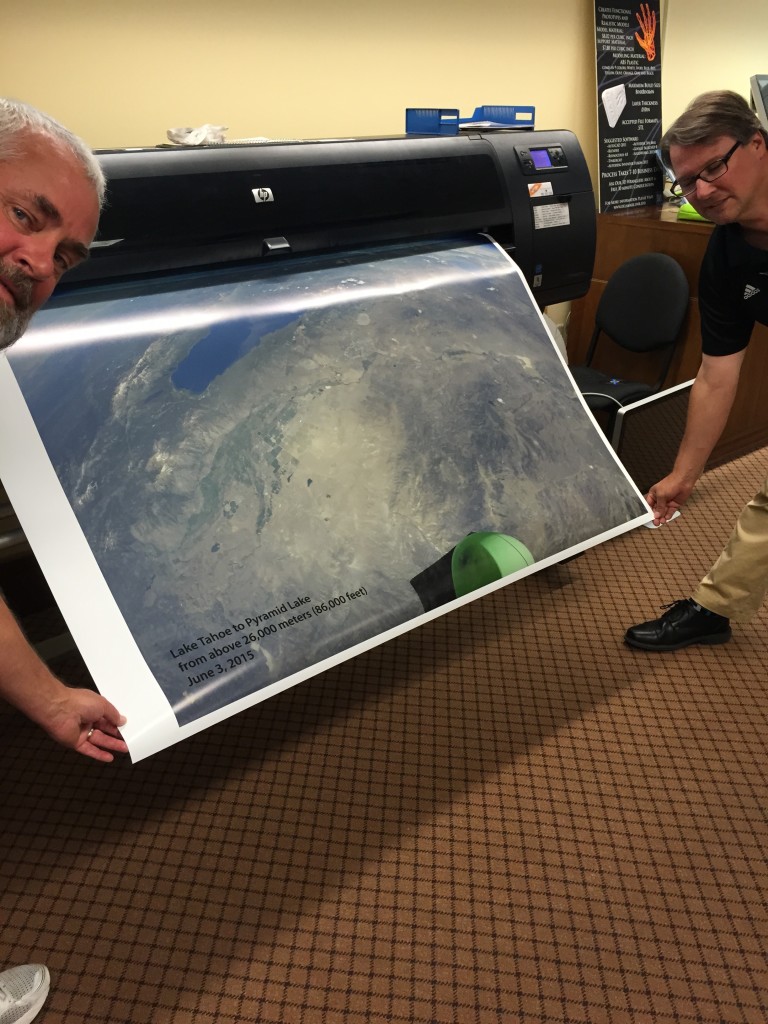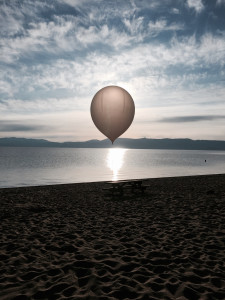Along with millions of others last night we set out to witness and observe the “Blood Moon, Supermoon Eclipse.” Living in the high desert has an advantage when it comes to using telescopes since we have a greater percentage of sunny days and “Moony” nights. But that wasn’t the case on this night. There was a thin cloud cover that we were optimistically hoping would clear, or be transparent enough to see through at a bit at least. We set up two Celestron 9 inch wide telescopes and hoped for the best.
When the time came for the Moon to make its appearance however it was a no show. We instead found a tower on a distant peak and zeroed in on it. The image, per how telescopes work, was upside down and backwards … and not all that interesting to see … but a crowd that grew to over 200 people on the top floor of a parking garage at the University of Nevada, Reno, didn’t care. Soon there was a line at least 20 people long queued up to take turns peering at whatever we could find.
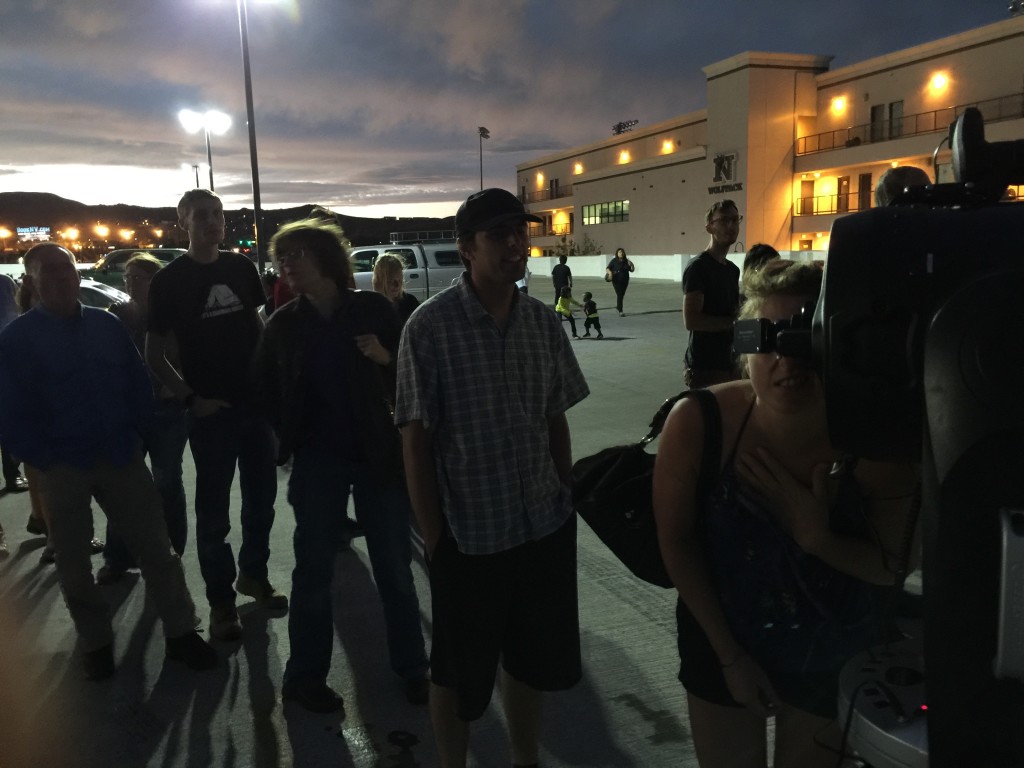
Hopeful eclipse watchers line up to view tower on top of mountain peak since eclipse is obscured by clouds.
Actually what was behind us to the west was much more interesting to look at than the cloud shrouded sky where the eclipse was happening.
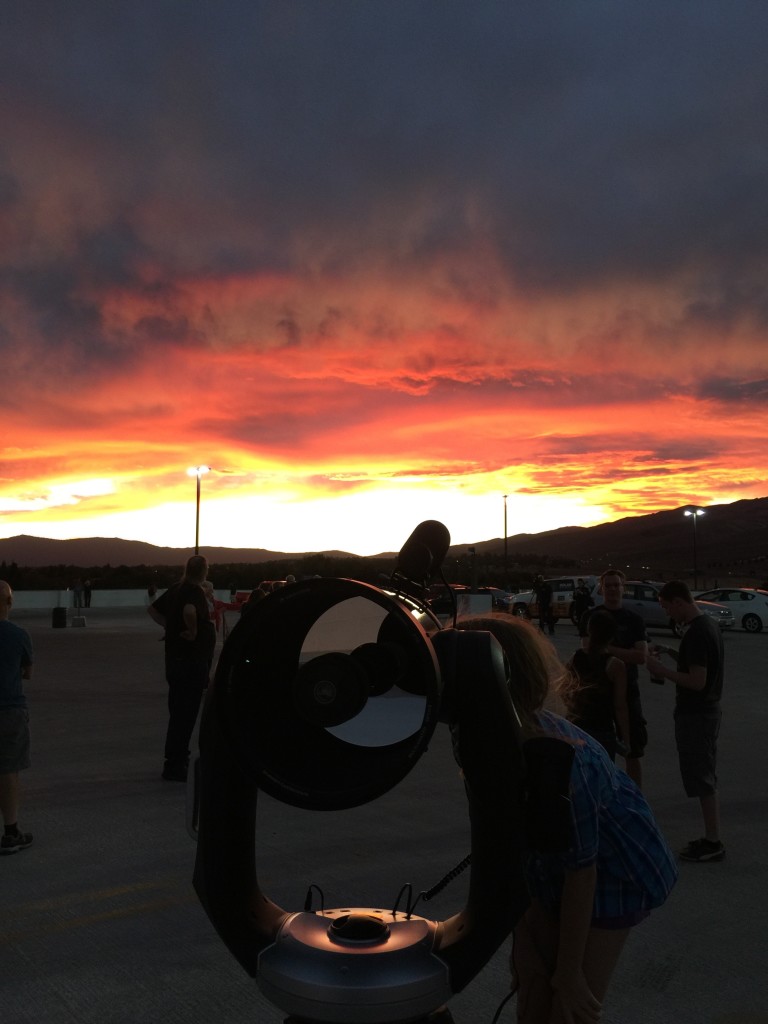
Note the mirrored surface in the back of the telescope looking into a blank sky while the real show is behind it.
Next door, the Flieschmann Planetarium was showing a brief video about the eclipse and how eclipses work, as well as a live stream from NASA of the eclipse from a cloudless location. Little by little the tower on the mountaintop became less and less interesting and the crowd dwindled to a handful. Most made their way to the planetarium until the live feed stopped coming in from NASA.
A local TV news team showed up to do a story about the eclipse and they were as disappointed as the rest of us. They did shoot a photo of the eclipse shot from somewhere else in the country that I pulled up on my phone. I held it out in front of their camera approximately where the eclipse was actually happening and they taped it and we all had a good laugh. Then, since things weren’t looking good they interviewed us and left.
Cars full of disappointed viewers departed and we were left behind to watch in case the clouds cleared (the eclipse was still going on up there for another hour or so), but eventually we decided to pack up.
So we started to take down the telescopes when I looked up and saw just a hint of Moon which quickly disappeared again, but others had glimpsed it too. We stopped and waited, and sure enough several minutes later the Moon popped out … mostly … still clouds partly obscuring the view, but there it was and we quickly started resetting the telescopes.
As we were getting things lined up people started showing up. Some were here before, others were new visitors.
Soon we had a line of viewers. Once everyone had had a chance to look we took turns holding our phones and cameras up to the eyepiece to try and snap photos. Holding steady and pushing the button at the same time without moving is a challenge, but we got some views:
What you see is the part of the Moon coming out of eclipse. The dark area is still red, but too dark for the phone’s camera to pick up.
So what could have been a disappointing evening turned out to be a good time had by all. We managed to answer questions about eclipses and made some connections with people in the community. As usual there was some messy-ness involved … but that’s what made it a great evening!
Learning is messy!

